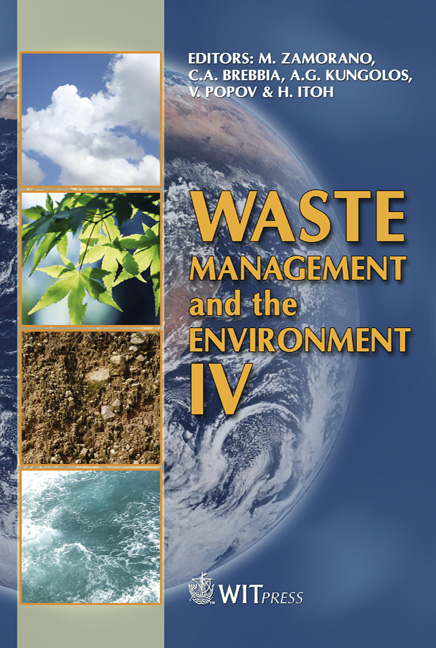Oxygen-enhanced Combustion In Waste Incineration: Economic And Environmental Considerations
Price
Free (open access)
Transaction
Volume
109
Pages
10
Page Range
299 - 308
Published
2008
Size
343 kb
Paper DOI
10.2495/WM080321
Copyright
WIT Press
Author(s)
N. Verdone, G. Liuzzo, P. De Filippis & F. Mazzoni
Abstract
In this paper the benefits attainable by replacing atmospheric air with oxygen enriched air in waste incineration processes are examined. Technical, economical and environmental aspects are all discussed on the basis of the results of process simulations performed by using the PRO/II-Provision v. 7.01 flowsheeting simulator (SimSci-Esscor). The simulations were carried out modelling an incineration plant equipped with a heat recovery section and a flue gas recirculation into the combustion chamber. The study is parameterized varying the thermal input to the plant (waste flow rate), the temperature set in the combustion chamber, the grade of enrichment in oxygen of the oxidizer and the price of the generated electric power. Results show that higher heat recovery efficiencies, lower fixed costs and decreased emissions of atmospheric pollutants are obtained when enriched air is utilized. Keywords: waste incineration, oxygen-enhanced combustion, waste-to-energy. 1 Introduction The use of oxygen enriched air has become an accepted practice in the field of chemical oxidation and combustion processes, typically in the steel, iron, glass, cement, pulp and paper, and petrochemical industries. The main benefits in the use of oxygen enriched air as an oxidizer have been described by several authors and can be summarized in the following points: (1) increase of flame temperature and stability, enhancing heat transfer efficiency, (2) increase in the combustion reaction rate due to the higher oxygen partial pressure, (3) prevention of soot formation, (4) reduction of fuel flow rate and flue gas generation.
Keywords
waste incineration, oxygen-enhanced combustion, waste-to-energy.





